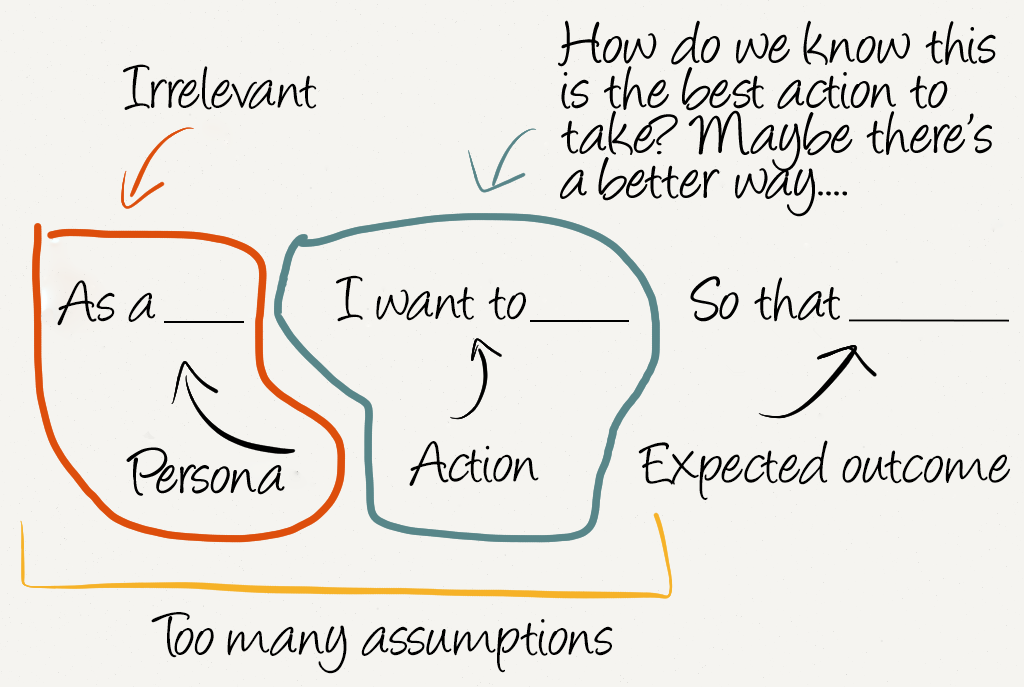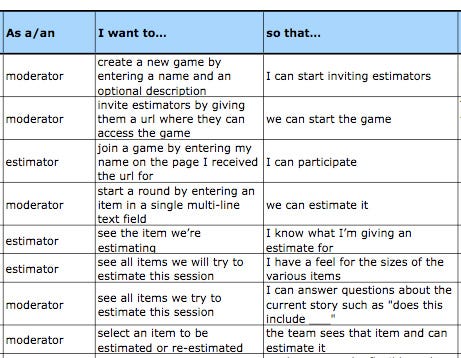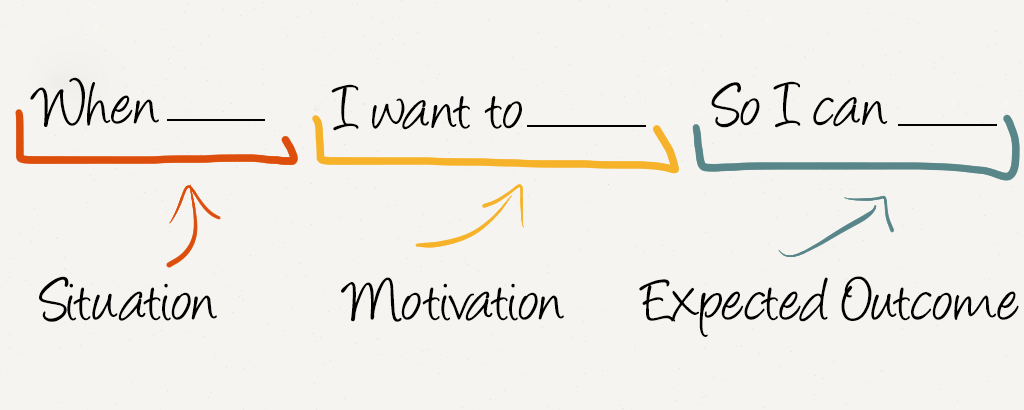Source originale du contenu
I’ve written about the problem with user stories before. At the time, I found it better to just have the team talk over proposed changes to the product. This worked great when the team had gelled and the product is very mature; however, now I’m working with a new team and building a product from scratch. In this case, because our canvas is blank, we are having trouble getting on the same page when it comes to customer motivations, events and expectations. But today, things have turned around. I’ve come across a great way to use the jobs to be done philosophy to help define features.
I call them Job Stories.
Where It Comes From
The idea comes from the really smart people at intercom. Here is what is they say:
We frame every design problem in a Job, focusing on the triggering event or situation, the motivation and goal, and the intended outcome:
When _____ , I want to _____ , so I can _____ .
For example: When an important new customer signs up, I want to be notified, so I can start a conversation with them.
It’s not referred to as a Job Story in the article, but I’ll call it that so I can easily reference it in the future.
The article doesn’t spend a whole lot of time with the concept, so I’ll talk about why I like it and why it’s better than User Stories.
The Problem (Again) With User Stories
Summed up, the problem with user stories is that it’s too many assumptions and doesn’t acknowledge causality. When a task is put in the format of a user story ( As a [type of user], I want [some action], so that [outcome] ) there’s no room to ask ‘why’ — you’re essentially locked into a particular sequence with no context.
Here’s how I see the format:


The first problem is that we start with a Persona, which is a very bad idea, and then plop in an action which we think should be taken in order to achieve the expected outcome. As I’ve marked in the above image, there’s really a disconnect between the action and persona.
Here, let’s look at some existing User Stories:


In the above chart, when someone reads moderator or estimator is that really adding anything? If anything it’s adding ambiguity to the flow. You and I are going to attach our own interpretation of what a moderator is or why they are in these particular contexts.
Here, try this. Chop off the whole As a / an segment and see if you’re really losing anything. Compare these two:
As a moderator I want to create a new game by entering a name and an optional description
VS.
I want to create a new game by entering a name and an optional description
Did the sky fall?
The Job Story : All About Context and Causality


Update: 2015–03–03: Based on even more usage & feedback, I use a slightly different explanation now. See these tweets of how I suggest framing it now. An update of this article will come in the future…
Check out the image above. Now we’re cookin’!
All of the information above is critical and very informative because we’re focusing on causality. Each job story should provide as much context as possible and focus on motivation… instead of just implementation.
[update June 4th 2014] After working with Job Stories for a while now, I’ve changed ‘Motivations’ to ‘Motivations and Forces’. Look to 5 Tips For Writing A Job Story which touches on this. Also learn more about the forces via this podcast and this short article.
Let’s rewrite some examples from the user story chart above as a Job Story and add motivation and context to each one.